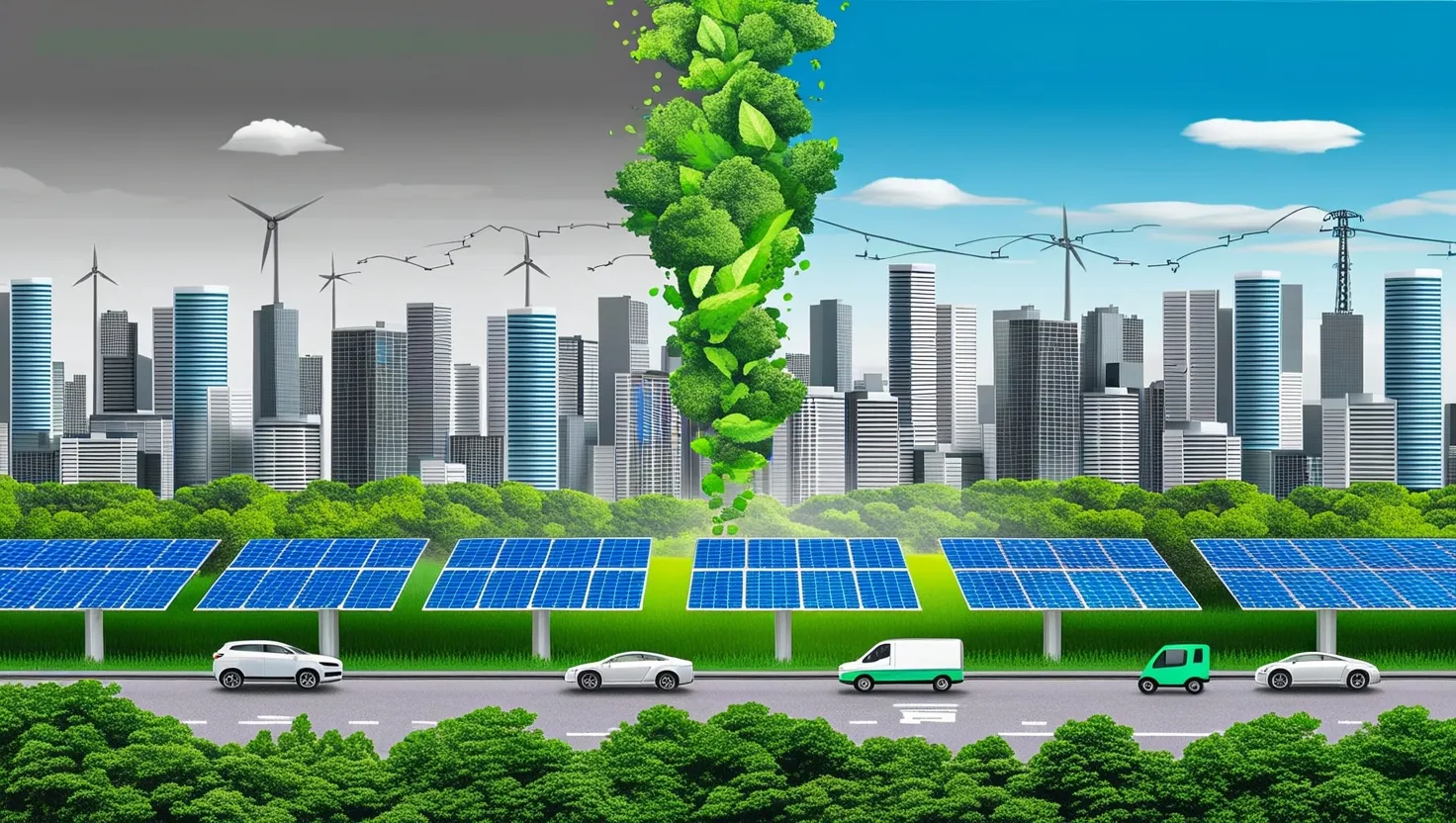As I reflect on India’s journey towards a greener future, it’s clear that the country is at a pivotal moment in its environmental history. The government has introduced a series of innovative and ambitious policies aimed at tackling some of the most pressing environmental challenges of our time. Here, I’ll delve into five crucial environmental policies that are shaping India’s green trajectory, and explore their impact, challenges, and the opportunities they present.
The Battle for Clean Air
India’s National Clean Air Programme (NCAP) is a flagship initiative that has been making waves since its launch in 2019. This program is not just another policy; it’s a comprehensive strategy to combat the pervasive issue of air pollution across 131 cities in 24 states. The goal is straightforward yet ambitious: to reduce Particulate Matter (PM10) concentrations by 20-30% by 2024-25, with a revised target of up to 40% reduction or achieving national standards by 2025-26.
The results so far have been encouraging. In just a few years, 95 cities have shown significant improvements in air quality, with 51 cities achieving reductions in PM10 levels of over 20% and 21 cities exceeding 40% reductions. These numbers are not just statistics; they translate into healthier lives for millions of Indians. The NCAP’s success is a testament to the power of coordinated action, involving all stakeholders from local governments to industries and citizens.
Transforming Rural Landscapes with Swachh Bharat Mission
In the heart of rural India, a silent revolution is underway, driven by the Swachh Bharat Mission (SBM). Launched in 2014, this mission has been a game-changer in the way rural communities approach waste management and sanitation. The story of Erramanchi Gram Panchayat in Andhra Pradesh is particularly inspiring. This small village, like many others, was once plagued by poor waste management practices, but through the SBM, it has transformed into a model of cleanliness and hygiene.
The SBM’s focus on sound solid waste management practices has been pivotal. It has introduced source segregation of waste, doorstep collection, and recycling and reuse options, which have significantly improved the overall quality of life in rural areas. The mission’s impact extends beyond just cleanliness; it has also enhanced public health and created a sense of community pride.
Harnessing the Power of the Sun
India’s National Solar Mission is another cornerstone of its green policy framework. The mission aims to make India a global leader in solar energy by targeting 500 GW of non-fossil fuel capacity by 2030. This ambitious goal is part of India’s broader commitment to reduce its emissions intensity by 45% and achieve net-zero by 2070.
The solar mission is not just about numbers; it’s about creating a sustainable energy ecosystem. Policies like renewable purchase obligations for industries and DISCOMs, along with market-based instruments like emissions trading systems, are driving the demand for green power. Additionally, production-linked incentives are helping to develop a domestic supply chain, ensuring competitive energy supply and energy independence.
Electrifying the Transportation Sector
India’s electric vehicle (EV) policies are another significant step towards a greener future. The government has set its sights on transforming the transportation sector, which is one of the largest contributors to air pollution. Incentives for EV manufacturers, subsidies for consumers, and investments in charging infrastructure are all part of the strategy to make EVs more accessible and affordable.
The impact of these policies is already visible. Cities like Delhi and Bengaluru are seeing a surge in EV adoption, not just among private car owners but also in public transportation. This shift is not only reducing air pollution but also creating new job opportunities in the EV sector. However, challenges remain, particularly in terms of charging infrastructure and battery technology, but the momentum is undeniable.
Protecting India’s Forests and Biodiversity
Forest conservation and biodiversity protection are critical components of India’s environmental policy landscape. The government has launched several initiatives aimed at restoring degraded forests, promoting afforestation, and protecting wildlife habitats. The new Green Credit Rules, announced recently, are an innovative addition to these efforts.
These rules incentivize individuals, organizations, and industries to undertake environmental projects that go beyond carbon emissions reduction. Projects focused on water conservation, afforestation, and biodiversity enhancement are being encouraged through the issuance of green credits. This market-based mechanism is expected to engage a wide range of stakeholders in environmental conservation, making it a community-driven effort rather than just a government initiative.
Challenges and Opportunities
While these policies are groundbreaking, their implementation is not without challenges. One of the biggest hurdles is the financial requirement; India needs an estimated $150 to $200 billion in annual investments to achieve its climate targets. Currently, only 25% of this required investment is being met, highlighting the need for additional private capital and government support.
Despite these challenges, there are numerous opportunities for citizen participation. Initiatives like the Swachh Bharat Mission and the National Clean Air Programme have shown that community engagement can be a powerful tool in environmental conservation. The new Green Credit Rules also offer a platform for individuals and organizations to contribute to environmental projects, making environmental conservation a collective responsibility.
A Collective Effort
As India continues on its green journey, it’s clear that these policies are not just about government actions; they are about creating a societal shift. They require a collective effort from all stakeholders – governments, industries, and citizens. The success of these initiatives will depend on how well we can align our individual actions with the broader national goals.
In the end, India’s green future is not just a policy imperative; it’s a moral obligation to our planet and to future generations. As we move forward, it’s essential to keep the conversation alive, to innovate, and to involve every segment of society in this critical mission. The journey is complex, but with determination and collective action, India can indeed become a global leader in sustainable development.






